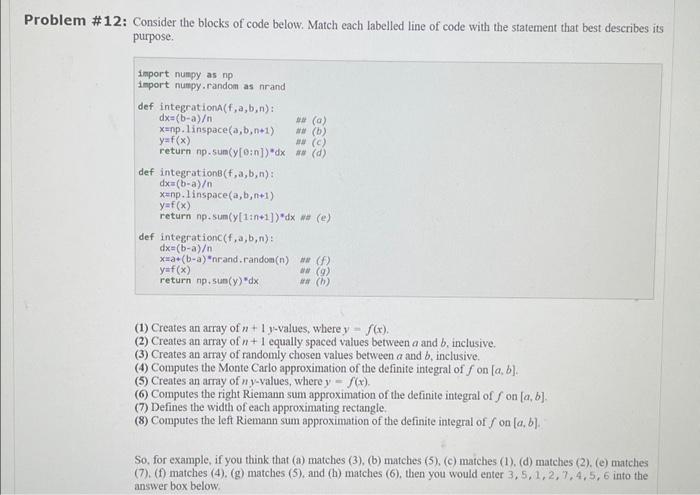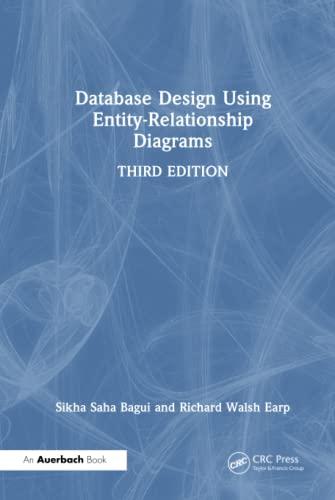Answered step by step
Verified Expert Solution
Question
1 Approved Answer
Consider the blocks of code below. Match each labelled line of code with the statement that best describes its purpose. import numpy as np import
Consider the blocks of code below. Match each labelled line of code with the statement that best describes its purpose. import numpy as np import numpy.random as nrand ( operatorname{def} ) integrationA( ( f, a, b, n) ) : ( mathrm{dx}=(mathrm{b}-mathrm{a}) / mathrm{n} quad ) ## (a) ( mathrm{x}=mathrm{np} ). linspace ( (mathrm{a}, mathrm{b}, mathrm{n}+1) quad ) # (b) ( y=f(x) quad # ) (c) return ( n p cdot operatorname{sum}(y[ heta: n]) * d x quad ) ## (d) def integrationB( ( f, a, b, n) ) : ( d x=(b-a) / n ) ( x=n p ). linspace ( (a, b, n+1) ) ( y=f(x) ) return ( n p cdot operatorname{sum}(y[1: n+1]) * d x ) ## (e) def integrationc ( (f, a, b, n) ) : ( mathrm{dx}=(mathrm{b}-mathrm{a}) / mathrm{n} ) ( x=a+(b-a) * n r a n d cdot r a n d o m(n) quad #(f) ) ( y=f(x) quad ) ## (g) return ( n p cdot operatorname{sum}(y) * d x quad #(h) ) (1) Creates an array of ( n+1 y )-values, where ( y=f(x) ). (2) Creates an array of ( n+1 ) equally spaced values between ( a ) and ( b ), inclusive. (3) Creates an array of randomly chosen values between ( a ) and ( b ), inclusive. (4) Computes the Monte Carlo approximation of the definite integral of ( f ) on ( [a, b] ). (5) Creates an array of ( n y )-values, where ( y=f(x) ). (6) Computes the right Riemann sum approximation of the definite integral of ( f ) on ( [a, b] ). (7) Defines the width of each approximating rectangle. (8) Computes the left Riemann sum approximation of the definite integral of ( f ) on ( [a, b] ). So, for example, if you think that (a) matches (3), (b) matches (5), (c) matches (1), (d) matches (2), (e) matches (7), (f) matches (4), (g) matches (5), and (h) matches (6), then you would enter ( 3,5,1,2,7,4,5,6 ) into the answer box below.

Step by Step Solution
There are 3 Steps involved in it
Step: 1

Get Instant Access to Expert-Tailored Solutions
See step-by-step solutions with expert insights and AI powered tools for academic success
Step: 2

Step: 3

Ace Your Homework with AI
Get the answers you need in no time with our AI-driven, step-by-step assistance
Get Started


